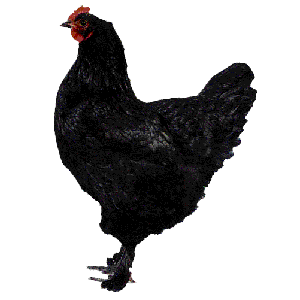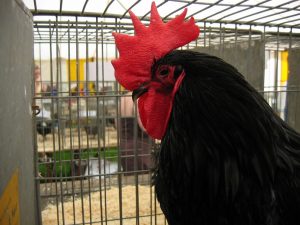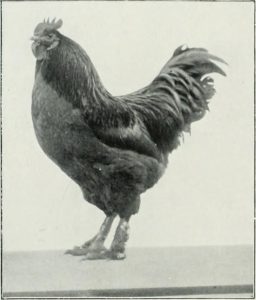
Overview
The Croad Langshan chicken is an Asiatic breed, named after the mountainous Langshan area of China and believed to have been first bred nearly 800 years ago. The Langshan was first imported to England in 1872 by Major F.T. Croad and to America in 1876, and from there to Australia in the 1880s.
Major F.T. Croad’s niece started the Croad Langshan’s society in 1904 in Great Britain. They are closely related to the modern Langshan breed which has been developed for ornamental purposes.
They are a dual purpose chicken and are of similar appearance to the Cochin.
Males weigh around 9.5lbs (4.3kgs) and females weigh on average 7.5lbs (3.4kgs).
Eggs
Size
Large sized eggs
Color
Dark brown colored eggs
Production per year
200 per annum
When do they start laying eggs?
From 20 weeks
Croad Langshan Characteristics
Temperament / Are they good as pets?
They are quiet and friendly chickens so would do well as pets, especially for families with children.
How do I tame “Croad Langshan” chickens?
Picking up and holding your chicks at a young age is one of the best ways to tame them as they become used to human contact. If you don’t want to do this or have chickens who are already a fair bit older, you can feed them out of your hand to tame them.
How many do I need to buy?
If you don’t have a lot of space for chickens then a minimum of 2 should be kept as they get lonely by themselves. It is better to have a few more than this and we would suggest 6.
How much space do they need?
This breed can either be kept free range or in a run. A run needs 25 square feet a bird and a free range area needs 250 square feet a bird.
Will they mix with my other chickens?
They should integrate with your other chickens as they’re friendly.
Appearance
Black plumage is the standard color for this breed and most birds have a beetle green sheen, but they can also be found in white and blue. They have black legs with bright pink feet and are the tallest breed of non-game bird chicken.
They have a single comb and red earlobes. The male has a well-spread tail with the sickles often reaching sixteen inches.
The closely-fitting saddle feathers, full hackled neck and upright carriage give the effect of a short back. The surface plumage throughout is close and smooth. The body in both sexes should be evenly balanced on straight legs, with very little backward bend at the hocks.


Feeding
What should I feed them?
When your first get your chickens they should be fed growers mash until they are 6 weeks old. Grower’s mash has 19{cfcd481556a8b43fba6af451761032bd323e94372a0c1e607} protein and everything your chickens need to develop.
Once they reach 6 weeks they can be fed chicken pellets which is a pelletized form of chicken feed with 15-16{cfcd481556a8b43fba6af451761032bd323e94372a0c1e607} protein.
When they’re 18 weeks old they need to be fed layers mash or layers pellets as they need nutrients to help them with egg production, this typically has around 16{cfcd481556a8b43fba6af451761032bd323e94372a0c1e607} protein.
How much should I feed them?
A single chicken can eat 2.9oz (80g) to 4.2oz (120g) a day.
Try feeding them ¼ of a pound (113g) a day and then depending on how much of this they eat you can change the amount.
Feed them either at meals times or leave it in a feeder for them to munch on when hunger strikes.
What can’t they eat?
There are lots of foods which chickens can’t eat, the main two being chocolate and beans. The theobromine in chocolate and the phytohemagglutinin in beans can cause heart problems and be fatal if consumed.
Moldy foods will cause health problems if ingested as they harbor bad bacteria. In England it’s illegal to feed your birds scraps from your kitchen.
What do I need to keep chickens?
The most essential item you need to keep chickens is a coop. The coop should have 1.1m2 or 11 square feet per chicken and should have a perch for each of them to rest on at night. There should be wooden laying boxes filled with wood shavings for the to lay eggs in.
The coop should have a fence which is sunk into the ground going around and over the top to keep your chickens protected at night. If you are keeping your chickens in a run they need 25 square feet per chicken, if you’re keeping them free range they need 250 square feet per bird.
There should be grit which they can always access as they need it for egg production. Water containers should be tall enough that chickens can’t stand in it and sturdy enough they can’t push it over.
Make sure to keep water in a shaded patch as chickens prefer cold water.
